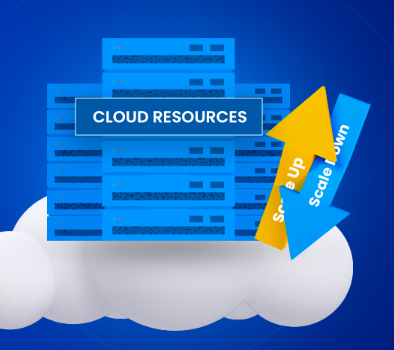
In today’s fast-paced digital landscape, businesses need technology that adapts as quickly as they do. That’s where scalability in cloud computing steps in. It’s not just a buzzword—it’s a foundational principle that determines how well a system can respond to changing demands, whether that’s a sudden spike in traffic or a seasonal dip in activity.
What Does Scalability Mean in the Cloud?
Scalability refers to a system’s capacity to adjust its performance and resource usage depending on the current needs. This adaptability allows companies to fine-tune their cloud infrastructure based on real-time requirements without wasting resources. The ability to seamlessly scale is one of the main reasons cloud computing has become indispensable for organizations of all sizes.
There are two primary ways scalability can be implemented:
- Horizontal Scaling: Involves adding more servers or machines to a system to improve its capacity. Think of it as expanding sideways—more devices working together to share the load.
- Vertical Scaling: Focuses on enhancing the power of an existing machine by increasing its CPU, memory, or storage. It’s like upgrading your hardware to make it more robust.
Why Scalable Cloud Systems Matter
A flexible and scalable cloud environment offers a range of advantages that go beyond just convenience:
- Tailored Performance: Systems can be configured to meet the unique needs of each business, providing the right balance between power and cost.
- Dynamic Resource Allocation: Companies can expand or reduce their computing capabilities on demand, ensuring they’re not overpaying during slower periods or underperforming during peak times.
- Reliable Service Continuity: Even in the face of hardware failures or unexpected loads, scalable systems help maintain essential services without interruption.
Ultimately, these benefits translate into significant cost savings and enhanced operational efficiency. Businesses can invest in just what they need—no more, no less—making their cloud architecture lean and effective.
Containers: A Real-World Example of Scalability
One of the most powerful illustrations of scalable cloud infrastructure is the use of containers. These lightweight, self-contained environments support both horizontal and vertical scaling, adjusting resources automatically based on demand. Whether traffic surges or drops, containers ensure optimal system performance without unnecessary overhead.
Because of their agility and responsiveness, containers are rapidly becoming a go-to solution for modern cloud deployments. They exemplify how scalable architecture can deliver performance, efficiency, and flexibility all at once.
Scalability isn’t just a technical feature—it’s a business advantage. As companies grow and shift, having the ability to scale their cloud infrastructure in real time means they can stay competitive, reduce waste, and deliver consistent service without overextending their resources.












